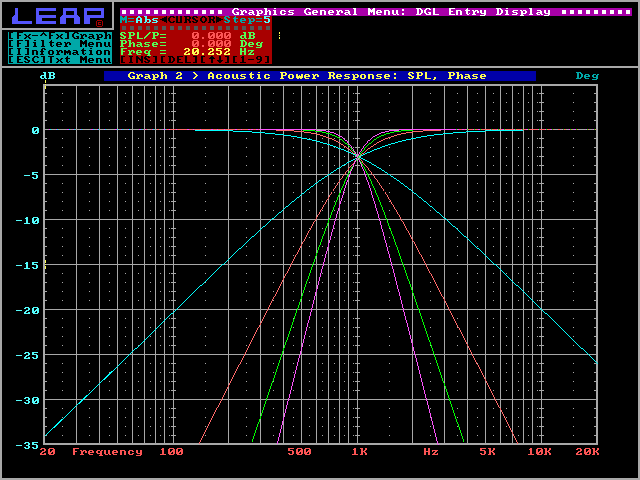
|
| Email Home Page |
|
|

|
| Email Home Page |
|
|
|
A crossover is a filter. Passive crossovers use capacitors and/or inductors in between the amplifier and the speaker to block/pass different ranges of frequencies (e.g. block the bass from the mids, block the bass and mids from the tweeters, block mids and highs from the woofers...). Passive crossovers allow different types of speakers (woofers, mids, tweeters) to be driven from a single full range amplifier and will only allow the proper frequencies to go to each individual speaker. Electronic crossovers use op-amps to divide up the frequencies. Electronic crossovers go in the preamp line before the amplifier.
Crossover Rolloff:
 The diagram above shows both high pass and low pass crossover filters with the 4 most common slopes. The crossover point is the frequency at which the level of the signal is 3dB down (for a Butterworth alignment - to be discussed later) from the level of the pass band (the crossover point is about 1000hz in this diagram). The pass band is simply the part of the audio band which is unaffected by the crossover's filters. |

|

|
|

|